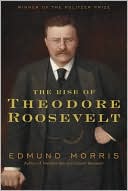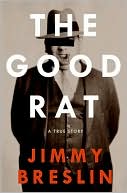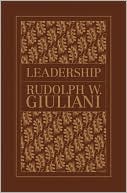Twelve Days of Terror: A Definitive Investigation of the 1916 New Jersey Shark Attacks
In July 1916, four people were killed in two weeks by a series of shark attacks, causing panic all along the coast. Perhaps best known as the inspiration for the Peter Benchley novel and Steve Spielberg film 'Jaws,' the story is set down here as the gripping record of what really happened.
Search in google:
In July 1916, four people were killed in two weeks by a series of shark attacks, causing panic all along the coast. Perhaps best known as the inspiration for the Peter Benchley novel and Steve Spielberg film 'Jaws,' the story is set down here as the gripping record of what really happened. Publishers Weekly Beginning July 1, 1916, a spate of shark attacks off the Jersey shore befuddled maritime experts and terrified the public. In the first incident, an unsuspecting vacationer's thigh was bitten off; he eventually died. Over the next 12 days, three more people were killed and another seriously injured. These two books by New Jersey authors re-create differing theories as to who, and what, was responsible for the carnage, a subject that scientists still debate today. Philadelphia Inquirer journalist Capuzzo (nominated four times for a Pulitzer) unwaveringly adheres to the most popular theory (that a single, juvenile great white shark was responsible for all the carnage), but his book's strength lies in its lively reconstruction of the age and its consciousness, in which a new leisure class was emerging, with many of its members venturing into the ocean for the first time. (He also recounts the shark's movements and supposed feelings from an omniscient, third-person perspective to strained, unintentionally comical and inevitably misleading effect.) The encounters between people and sharks make for some tense and gruesome reading, and the rest of the book is equally page-turning: the zeal to find the "Jersey man-eater," the sensational "feeding frenzy" of the press and the befuddlement of a scientific community, which then devoutly believed that sharks did not bite humans. On that last front, Fernicola, a physician specializing in post-stroke and post-injury recovery, adds to his own investigation of this episode an exhaustive review of shark science today and theories of shark aggression toward humans, including possible environmental factors (heat, changes in human bathing habits, even bathing suit styles), speculations on the perpetrator's exact species, and well-reasoned arguments and conclusions. Fernicola is a recognized authority on the 1916 attacks (his work has provided the basis for Discovery Channel and History Channel documentaries on the subject), but he marshals so much data that his book fails to live up to its lurid title, giving its looming competitor the edge. (May; Capuzzo on-sale: May 8) Forecast: With bathing suit season just around the corner, these books are well timed. Fernicola's, which will be the subject of an upcoming spread in USA Today and is scheduled for coverage on Good Day New York, will provide grist to shark enthusiasts and fans of the Jaws films. Lyons Press has high hopes for its book and has committed to an unprecedented (for this house) 50,000 first printing. Capuzzo will tour six major cities on both coasts, along with stops on Cape Cod and, of course, the Jersey shore. His compulsive potboiler just may be the hot read on the beach this summer. Copyright 2001 Cahners Business Information.
\ From Barnes & NobleThe 12 days of terror that Dr. Fernicola's meticulous study addresses are, of course, the days of the great Jersey shark attacks of July 1916, also the subject of Michael Capuzzo's Close to Shore. Like four-time Pulitzer nominee Capuzzo, history buff Fernicola arrives at this work with impressive credentials: His research, which includes interviews with surviving witnesses, has been the basis for Discovery Channel and History Channel documentaries about shark assaults.\ \ \ \ \ Publishers Weekly\ - Publisher's Weekly\ Beginning July 1, 1916, a spate of shark attacks off the Jersey shore befuddled maritime experts and terrified the public. In the first incident, an unsuspecting vacationer's thigh was bitten off; he eventually died. Over the next 12 days, three more people were killed and another seriously injured. These two books by New Jersey authors re-create differing theories as to who, and what, was responsible for the carnage, a subject that scientists still debate today. Philadelphia Inquirer journalist Capuzzo (nominated four times for a Pulitzer) unwaveringly adheres to the most popular theory (that a single, juvenile great white shark was responsible for all the carnage), but his book's strength lies in its lively reconstruction of the age and its consciousness, in which a new leisure class was emerging, with many of its members venturing into the ocean for the first time. (He also recounts the shark's movements and supposed feelings from an omniscient, third-person perspective to strained, unintentionally comical and inevitably misleading effect.) The encounters between people and sharks make for some tense and gruesome reading, and the rest of the book is equally page-turning: the zeal to find the "Jersey man-eater," the sensational "feeding frenzy" of the press and the befuddlement of a scientific community, which then devoutly believed that sharks did not bite humans. On that last front, Fernicola, a physician specializing in post-stroke and post-injury recovery, adds to his own investigation of this episode an exhaustive review of shark science today and theories of shark aggression toward humans, including possible environmental factors (heat, changes in human bathing habits, even bathing suit styles), speculations on the perpetrator's exact species, and well-reasoned arguments and conclusions. Fernicola is a recognized authority on the 1916 attacks (his work has provided the basis for Discovery Channel and History Channel documentaries on the subject), but he marshals so much data that his book fails to live up to its lurid title, giving its looming competitor the edge. (May; Capuzzo on-sale: May 8) Forecast: With bathing suit season just around the corner, these books are well timed. Fernicola's, which will be the subject of an upcoming spread in USA Today and is scheduled for coverage on Good Day New York, will provide grist to shark enthusiasts and fans of the Jaws films. Lyons Press has high hopes for its book and has committed to an unprecedented (for this house) 50,000 first printing. Capuzzo will tour six major cities on both coasts, along with stops on Cape Cod and, of course, the Jersey shore. His compulsive potboiler just may be the hot read on the beach this summer. Copyright 2001 Cahners Business Information.\ \ \ BooknewsFernicola's research became the basis for two popular television documentaries on the 1916 attacks. In July 1916, he recounts, the US was entangled in World War I, New York City writhed in the throes of a deadly polio epidemic, and people from three states sought relief from the summer heat at the Jersey Shore. In 12 days, one or more sharks had fatally mauled four swimmers and nearly killed another. Newspapers blared the sensation above news of the war. Annotation c. Book News, Inc., Portland, OR (booknews.com)\ \








